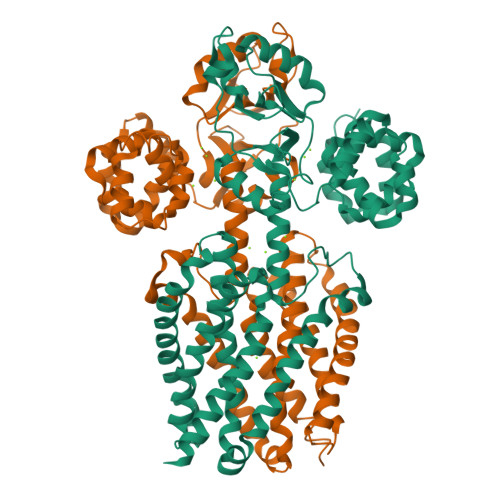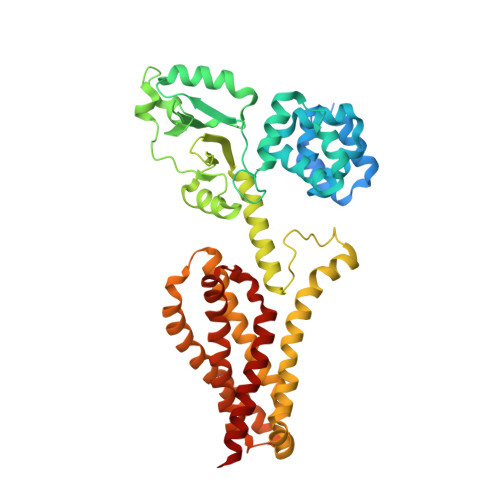Mg(2+)-dependent gating of bacterial MgtE channel underlies Mg(2+) homeostasis
Hattori, M., Iwase, N., Furuya, N., Tanaka, Y., Tsukazaki, T., Ishitani, R., Maguire, M.E., Ito, K., Maturana, A., Nureki, O.(2009) EMBO J 28: 3602-3612
- PubMed: 19798051
- DOI: https://doi.org/10.1038/emboj.2009.288
- Primary Citation of Related Structures:
2ZY9 - PubMed Abstract:
The MgtE family of Mg(2+) transporters is ubiquitously distributed in all phylogenetic domains. Recent crystal structures of the full-length MgtE and of its cytosolic domain in the presence and absence of Mg(2+) suggested a Mg(2+)-homeostasis mechanism, in which the MgtE cytosolic domain acts as a 'Mg(2+) sensor' to regulate the gating of the ion-conducting pore in response to the intracellular Mg(2+) concentration. However, complementary functional analyses to confirm the proposed model have been lacking. Moreover, the limited resolution of the full-length structure precluded an unambiguous characterization of these regulatory divalent-cation-binding sites. Here, we showed that MgtE is a highly Mg(2+)-selective channel gated by Mg(2+) and elucidated the Mg(2+)-dependent gating mechanism of MgtE, using X-ray crystallographic, genetic, biochemical, and electrophysiological analyses. These structural and functional results have clarified the control of Mg(2+) homeostasis through cooperative Mg(2+) binding to the MgtE cytosolic domain.
Organizational Affiliation:
Department of Basic Medical Sciences, Institute of Medical Science, The University of Tokyo, Minato-ku, Tokyo, Japan.



















